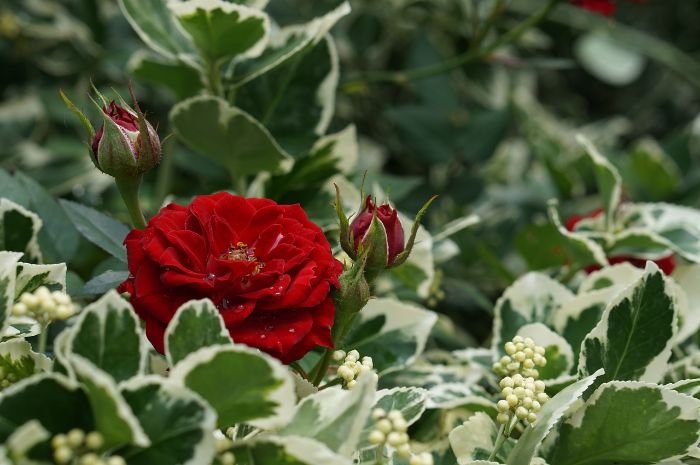Imagine walking into your garden. A symphony of smells hits you. It’s filled with the sweet scent of flowers and herbs. You’re taken to a world of smells and joy. But how do you create this amazing garden smell?
Some think just making a garden look pretty is enough. But, the smell is key too. Smells can make you feel emotions or remember good times. Adding fragrant plants makes your garden beautiful and improves the smell.
We will talk about fragrant plants. We’ll show you how they can make your garden smell great. You’ll learn to pick the right plants and paths. You’ll make your own smelly garden paradise.
Key Takeaways:
- Discover the importance of scent in garden design and the benefits of fragrant plants.
- Learn how to select the perfect fragrant plants for your garden.
- Explore the top fragrant flowers, shrubs, and herbs to incorporate into your garden.
- Find out how to strategically design and care for your aromatic garden.
- Overcome common challenges to ensure year-round fragrance in your garden.
Table of Contents
Introduction to Fragrant Gardens
A fragrant garden is a beautiful place full of lovely scents. These smells mix with nature’s beauty. They can trigger memories, calm our minds, and make the garden better. Adding scents brings extra joy and interest to the garden.
The Importance of Scent in Garden Design
Scent is really important in making a garden special. It sets the mood and makes us feel different things. Fragrant gardens can take us to other places with their sweet, floral, or herbal scents. Choosing the right smells can turn a garden into a peaceful spot, a romantic spot, or something lively.
Benefits of Fragrant Plants
Fragrant plants have many good points. They make our garden smell wonderful. They also help important insects like butterflies and bees. This makes the ecosystem stronger. These plants can hide bad smells and make us feel calm and relaxed. Plants like lavender or chamomile can even help us sleep better and reduce stress.
Selecting Fragrant Plants
Factors to Consider When Choosing Scented Plants
When picking fragrant plants for your garden, think about several things. This will make sure your garden smells great. You will also have a beautiful place to rest and enjoy nature’s scents.
Consider these factors to pick the perfect fragrant plants for your garden. You’ll have a space that’s not just visually pleasing, but smells amazing too.
- Climate – Different plants like different climates. Think about your region’s weather and sunlight. This will help you choose the best plants for your garden.
- Planting Zone – Use the USDA Hardiness Zone Map to find your planting zone. Knowing this helps you pick plants that will do well in your area.
- Plant Size – Be mindful of how much space your plants will need. Make sure they have room to grow without crowding each other.
- Planting Purpose – Knowing why you want fragrant plants will guide your selection. Are you planting for a pretty pathway, a focal point, or to make borders?
- Plant Care – Think about how much care the plants need. For example, some may need regular pruning. Make sure you can take care of them properly.
Thinking about these factors will help you choose great fragrant plants. Your garden will smell wonderful all year long.
Combining Aesthetics and Aromas
To make a garden that looks and smells amazing, plan where you put your plants. Mix different scents and colors for a beautiful, fragrant space.
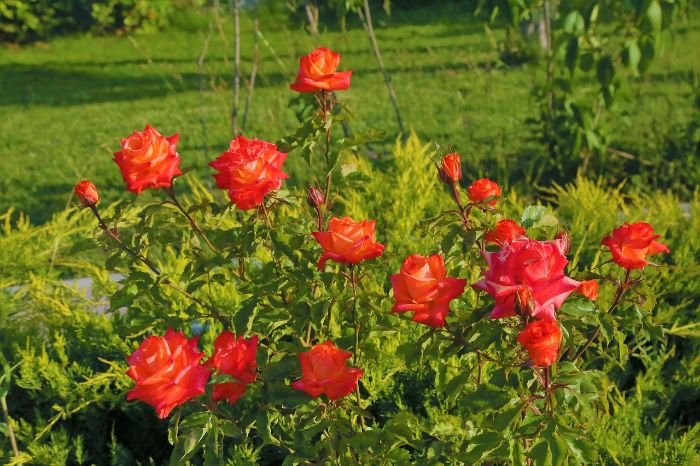
Here are some tips for creating a stunning garden that smells great:
- Layering – Put taller plants in the back and shorter ones in the front. This way, scents and beauty reach all parts of your garden.
- Contrasting Colors – Pair plants with different but harmonious colors. This creates a lovely, eye-catching effect.
- Sequential Blooming – Choose plants that bloom at different times. This keeps your garden smelling and looking nice all year.
- Texture and Form – Add plants with various textures and shapes. This makes your garden interesting and visually appealing.
By carefully planning your garden’s design, you can enjoy a truly beautiful and fragrant space. It will be perfect for you and your guests to enjoy.
Top Fragrant Plants for Your Garden
Now, you know why fragrant plants are key in your garden. Let’s look at top picks for an aromatic paradise. You’ll find aromatic flowers, fragrant shrubs, and scented herbs. They’ll make your garden a wonderland for the senses.
Aromatic Flowers
Make your garden beautiful with these stunning, fragrant flowers:
- Roses – Classic Beauty and Scent
- Jasmine – Intense and Sweet
- Gardenia – Exotic and Powerful
Fragrant Shrubs
These fragrant shrubs add depth and structure to your garden:
- Lilac – Springtime Fragrance
- Mock Orange – Citrus-Like Scent
- Daphne – Winter Bloomer with a Strong Scent
Scented Herbs
Enjoy versatility and tastes with these scented herbs:
- Lavender – Calming and Versatile
- Rosemary – Pine-Like Aroma
- Thyme – Earthy and Fresh
Plant these top fragrant options to create a gorgeous and captivating garden. It refreshes your senses and wows your visitors. Experience the stunning beauty and sweet scents of nature.
Aromatic Flowers
A scented garden is a delight because of its beautiful, fragrant flowers. They make your garden look lovely and smell enchanting. This section will focus on three common aromatic flowers: roses, jasmine, and gardenias.
Roses – Classic Beauty and Scent
Roses are loved worldwide for their beauty and amazing scent. They have velvety petals and a charming aroma. You can choose from many types of roses, each with its unique smell. Roses add elegance and romance to any garden, whether climbing a trellis or in a flower bed.
Jasmine – Intense and Sweet
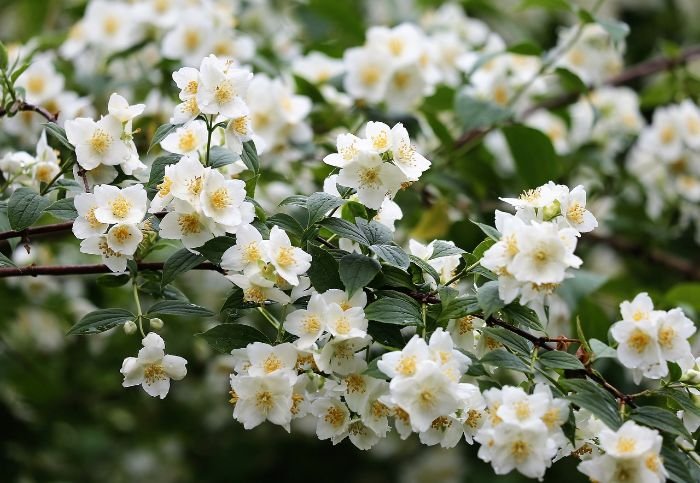
Jasmine’s scent is intense and sweet, great for evenings. Its white flowers smell strong at night, making the garden feel magical. Jasmine, growing as a vine or shrub, brings exotic beauty and scent to spaces. Its aroma is used in perfumes and aromatherapy for calming and uplifting.
Gardenia – Exotic and Powerful
Gardenias have large, white flowers and a strong, lovely scent. Their fragrance is sweet and floral, with hints of citrus and vanilla. Gardenias’ smell can fill a whole garden, creating a sensory oasis. They grow best in warm places and add elegance and allure to any garden.
Fragrant Shrubs
Shrubs are great for gardens, adding color and structure. Fragrant shrubs bring an extra joy with their lovely smells. They make your garden not just beautiful but also sweet-smelling.
Lilac – Springtime Fragrance
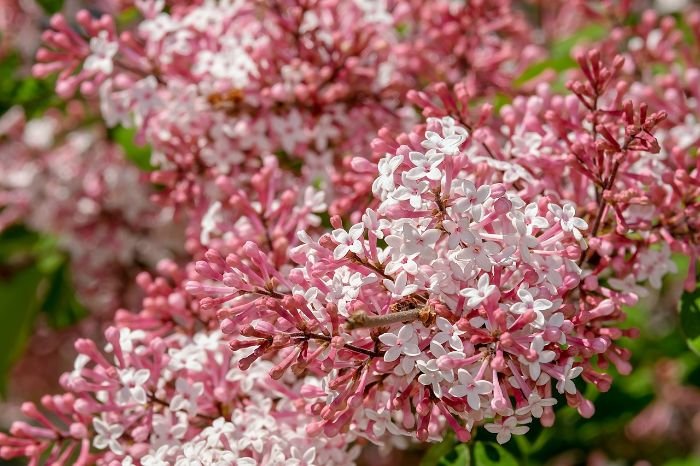
Lilacs are well-loved for their sweet smell and pretty blooms. These bushes have bunches of flowers in purple, white, and pink. Their scent takes us back to spring, with its sunny days. Place lilacs where they get a lot of sun and have good drainage for best growth.
Mock Orange – Citrus-Like Scent
Mock Orange, or Philadelphus, has a nice, citrusy smell. It blooms with white flowers in late spring or early summer, smelling like orange blossom. With its pretty shape and green leaves, it looks great in any garden. It does well in sunny or partly shaded areas with soil that lets water through.
Daphne – Winter Bloomer with a Strong Scent
Daphne is special because it blooms in winter, when other plants aren’t flowering. Its flowers are not only pretty but also very fragrant. Daphne plants vary in flowers and how they grow, giving you options for size and color. They like soil that drains well and some shade to protect them from too much winter cold.
Scented Herbs
Lavender – Calming and Versatile
Lavender is loved by many for its calming smell and many uses. Its unique scent helps people relax and lowers anxiety. You can use it in many ways, like in oils or as a scent in rooms. It’s also great in foods, like desserts and teas, adding a special taste. Lavender looks pretty with its purple flowers, making any garden more beautiful.
Rosemary – Pine-Like Aroma
Rosemary has a fresh pine smell and taste. It’s known to make you feel clear and focused. It’s a key herb in Mediterranean dishes, adding lots of flavor. Rosemary plants are also pretty, attracting helpful insects with their blue flowers. Plus, it might help with memory and stress.
Thyme – Earthy and Fresh
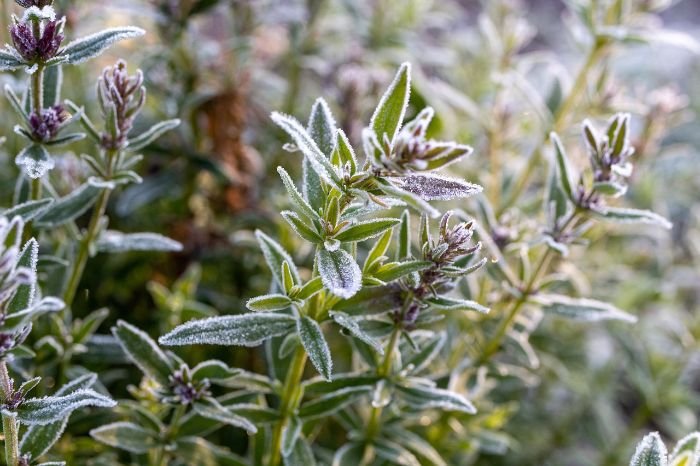
Thyme brings a refreshing, earthy smell into your space. It’s great for many dishes, from stews to meats, making food tastier. It looks lovely in gardens with its small leaves and flowers. Thyme may also help your immune system and your digestion.
Planting scented herbs like lavender, rosemary, and thyme makes your garden and the air smell great. Use them in cooking, crafts, or just enjoy their scents. These herbs add a lot to your garden’s look and feel.
Designing an Aromatic Garden
You’ve picked out the best plants for a fragrant garden. Now, it’s time to make a special place that smells wonderful. Pay attention to where you put the plants, how the scents flow, and mix different smells to make a perfect garden.
Strategic Placement for Maximum Impact
Placing your fragrant plants just right is crucial. Pick spots where you often hang out, like a patio. Putting scented plants close boosts the area’s charm. You may also line walkways or doorways with these plants to welcome guests with beautiful smells.
Creating Fragrance Pathways
Make your garden smell awesome by designing paths filled with fragrance. Imagine walking along a stone path lined with fragrant blooms. The smell spreads around you, making your stroll a sensory treat.
Combining Scents for a Balanced Aroma
To make your garden smell just right, mix different scents. Some scents go great together, while some don’t mix well. Play around with mixing rose’s sweetness and mock orange’s tang for a fresh combo. Get creative to tailor the smells to what you love.
Planting and Care Tips for Fragrant Plants
After picking your fragrant plants and planning your garden, pay close attention to how you plant and care for them. This is key to enjoying their full scent. Here are tips for taking care of your fragrant plants:
Soil Preparation and Planting Techniques
First, get the soil ready before planting your plants. This step is critical for plant growth and health. Remove weeds and debris. Loosen the soil with a fork or tiller to help with water flow and air.
Next, the way you plant differs by plant type. For flowers and herbs, make a hole just larger than the rootball. Be sure the plant is at the same depth as before. Gently press the soil around the plant without compacting it too much.
For shrubs, make a hole wider than the rootball but not too deep. Position the shrub so it’s level with the ground. Put back the soil and gently press around the base.
Watering and Fertilizing for Strong Scents
To keep plants healthy and fragrant, water them well and feed them right. Water deep but let the top soil dry a bit between times. This stops root rot and helps roots grow deep.
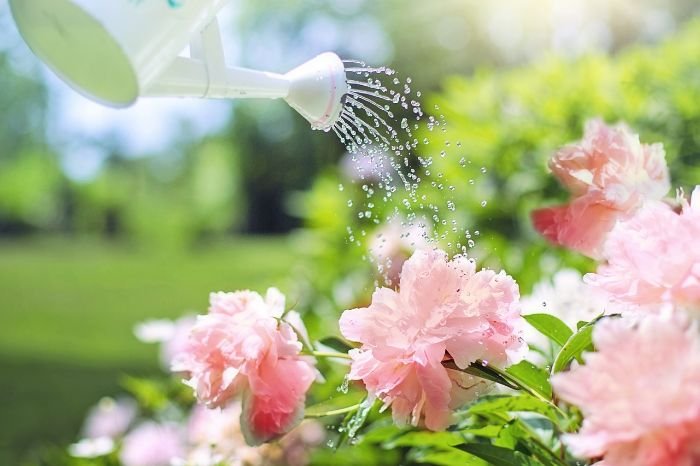
For food, use slow-release fertilizer made for your plant type. Read the label for how often to use it. Choose a fertilizer rich in phosphorus for more flowers and smell.
Pruning and Maintenance
Trimming and general upkeep are vital for fragrant plants. Cut away dead or sick parts often to keep your plant looking and feeling good.
Trimming helps air and sun reach plant parts, boosting their scent. It also keeps plants the right size and shape. Do this at the right time and properly.
Watch your plants for bugs or diseases. Catching and dealing with problems early can save your plant’s smell.
If you mind these tips, your fragrant plants will do well. Their sweet smell will embrace your garden.
Enhancing Your Aromatic Garden
To make your garden smell and feel better, add some accessories. They can really boost the fragrance and mood outdoors. Here are some ideas to start with:
Adding Accessories to Enhance Fragrance
Add items that smell nice to lift the garden’s aroma. Use scented candles or diffusers in the garden. Pick smells like lavender or citrus to go with your plants. You can also use scented herb wreaths for a lovely scent.
Using Containers for Mobility
Containers are great for both looks and moving plants. They let you try different spots to make the most of the smell. Put fragrant plants in containers near where you sit or walk. Mixing various fragrant plants in one container also looks good.
Incorporating Water Features
Water features add calmness and more to your garden. The sound of water is soothing and hides other noises. You can add a fountain, pond, or a wall water piece. Pick plants like water lilies for a more watery feel.
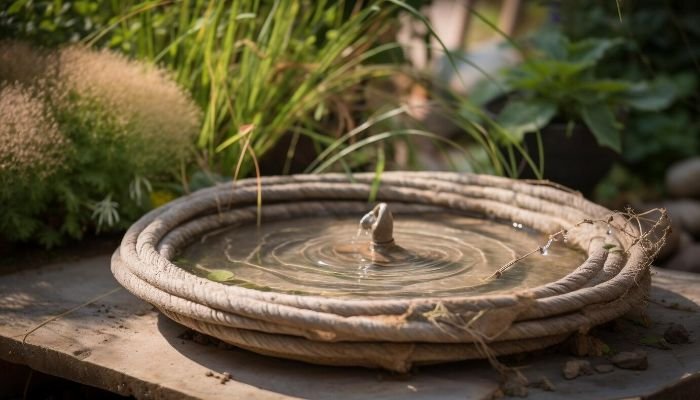
By adding scent-boosting tools, mobile plant containers, and water features, your garden can become a fragrant paradise. These tips are simple but make your garden more enjoyable. Feel free to be creative and turn your garden into a place of soothing smells.
Overcoming Common Challenges
Creating a fragrant garden brings joy, but it faces challenges too. It’s important to know and solve common problems. This way, your garden will succeed and smell great all year. Dealing with pests, diseases, and the weather means taking action early.
Dealing with Pests and Diseases
Gardens can suffer from pests and diseases easily. It’s vital to fight these off by checking your plants often. Look for signs like wilting or strange colors. Use natural ways to control pests to keep good bugs safe.
Managing Different Climate Conditions
Climate deeply affects smelling plants’ health. Pick the right plants for your area’s weather, considering sun and rain. Living in extreme climate areas might need extra care. This ensures your garden’s plants stay healthy and fragrant.
Ensuring Year-Round Fragrance
Want your garden to smell good all year? Choose plants that bloom at different times. This keeps your garden smelling amazing through the seasons. Evergreens also help by adding scent even when not flowering.
Conclusion – Creating a Scented Sanctuary in Your Garden
Turn your garden into a scented sanctuary with fragrant plants. Choose the right mix of flowers, shrubs, and herbs. This makes your garden not just a pretty sight but a place for calm and renewal.
Putting plants in the right spots is important for strong scents. Grow fragrant flowers by seats or paths. This surrounds you with beautiful smells. You could even make scented paths to lead visitors on a sensory journey.
Try mixing different scents to find balance. Select plants that smell good together. This way, your garden’s scent will be like a perfect song, taking you to a peaceful place.
To wrap up, anyone can make a scented garden. Use the advice here to pick the best plants, plan your garden well, and look after your plants. This way, your garden will be more than eye-catching. It will also wrap you in a lovely scent. Enjoy the beauty and the unforgettable moments in your garden.
FAQ
What are fragrant plants?
Fragrant plants give off a nice smell. They’re great for making gardens smell good.
Why are fragrant gardens important?
They make outdoor spaces more enjoyable. The smells can make you feel happy and relaxed.
What are the benefits of using fragrant plants in garden design?
These plants make gardens look pretty. They bring bees, keep bugs away, and could even help you feel better.
What factors should I consider when selecting scented plants?
Think about the weather, how much sun and water they need, and if they’ll get along with the other plants.
How can I combine aesthetics and aromas in my garden?
Put the plants where they look good and smell good at the same time.
What are some popular aromatic flowers?
Roses, jasmine, and gardenia smell great. They make your garden look and smell lovely.
How can I design an aromatic garden?
Place fragrant plants smartly and mix their smells well. This will make your garden’s smell just right.
How can I enhance my aromatic garden?
Add things like wind chimes and use plants in pots. Also, consider adding water features for a more peaceful spot.






